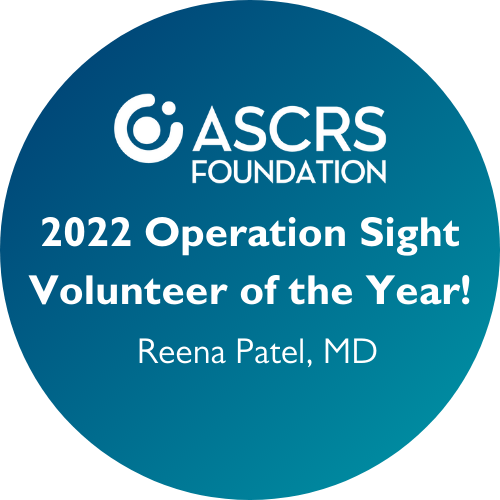Laser peripheral iridotomy is a surgical procedure used to treat angle-closure glaucoma, which is also known as acute glaucoma or narrow-angle glaucoma. The eye has drainage channels at the angle where the iris and cornea meet. If those channels get blocked, pressure builds up within the eye and eventually damages the optic nerve.
Angle-closure glaucoma often develops suddenly and is, therefore, a medical emergency. Symptoms of the condition can include the following:
- Severe pain in the eyes
- Blurred vision caused by a swollen cornea
- Seeing haloes around lights
- A lot of tearing
- Headaches
- Nausea and vomiting
In the sub-acute form of angle-closure glaucoma, the patient has milder symptoms that can include slightly blurred vision, minor pain and seeing haloes around lights.
How is Angle-Closure Glaucoma Treated?
Dr. Patel will start by performing a series of tests to determine the extent of the angles’ closure and to rule out other disorders that can also cause pressure to build up within the eye. She will also check the optic nerve for damage and look for other abnormalities within the eye.
Before performing the iridotomy, medications will be used to make the cornea less cloudy and reduce the pressure within the eye. Since angle-closure glaucoma can also cause dilation of the pupil, another medication will also be used to reduce the pupil’s size.
What Does Laser Peripheral Iridotomy Involve?
During a laser peripheral iridotomy procedure, a laser is used to create an opening in the iris that allows the trapped fluid to reach the drainage channels and relieve the pressure. Dr. Patel may use a Nd:YAG laser, an argon laser or both.
Eye drops will be administered that act as a local anesthetic. Dr. Patel will then place a large contact lens over the eye and aim the laser at the eye. The patient may feel a pinprick or a “pop” in the eye; the procedure is otherwise considered to be fairly comfortable. The doctor will then remove the contact lens and administer more eye drops. Throughout the procedure, she will check the patient’s eye pressure.
The patient may feel some mild discomfort afterwards, or they may feel like they have something in their eye. They may also have blurred vision. Such side effects are normal and fade within a few hours to a few days.
Dr. Patel may prescribe anti-inflammatory eye drops that the patient may need to use for up to a week. We may also schedule an appointment for about a month after the procedure so that we can check on the patient’s recovery and determine if they need further treatment.
While angle-closure glaucoma usually involves just one eye, Dr. Patel may decide to operate on both eyes if she believes the patient might develop angle-closure glaucoma in the other eye.
Risk Factors Associated with Angle-Closure Glaucoma
This condition is more common in people who are far-sighted or have an unusually short eye. People with cataracts, diabetes or certain inflammations like uveitis are also likely to develop it.
Angle-closure glaucoma is more common in Asians than in Caucasians. It tends to affect women more than men, and the risk of developing it increases as a patient gets older.
To learn more about all of the facts about this condition, including your treatment options, visit Dr. Patel at Wichita Vision Institute. Our office is conveniently located in Wichita. Contact us today to book your appointment.







